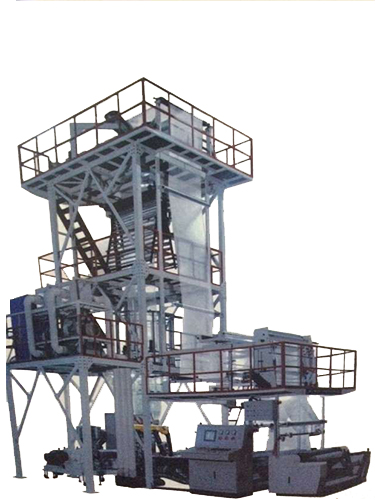Dalian Youyan Plastic Machinery Co., Ltd.
Couplet: Feng Manager
Phone/fax:086-0411-86260347
Hand:18624289888
13604263838
Mail box:21272059@qq.com
Network access:www.dlyouyan.com
Address: Chinese Lushunkou District of Dalian City, the three streams town (take Tuchengzi Dalian to Lushun Road westbound vehicle airport about 200 meters in front of about 100 meters)
When using the blown film unit, it is necessary to pay attention to the maintenance and upkeep of the equipment, clean and replace vulnerable parts in a timely manner, lubricate and inspect regularly, and ensure the normal operation of the equipment. At the same time, operators need to be proficient in the operation technology of the blown film unit, set production process parameters reasonably, adjust problems in the production process in a timely manner, and ensure the stable quality of the produced film products.
The operation of the blown film unit is simple and easy to learn, but it requires high technical skills from the operator. The operator needs to master the working principles and operating methods of each component, and adjust the unit parameters in a timely manner to ensure product quality. At the same time, the operator also needs to have certain maintenance and upkeep abilities, timely clean and inspect the equipment, and ensure the normal operation of the equipment.
Common faults and troubleshooting methods of Dalian blown film unit
Uneven film thickness: This is a common problem during the blown film process. It may be caused by unreasonable or blocked die design, wear of extruder screws, uneven cooling, and other reasons. If it is a problem with the mold head, you can check whether the flow channel of the mold head is unobstructed, and if necessary, clean or replace the mold head. For screw wear, it is necessary to replace the worn screw components in a timely manner. If the cooling is uneven, check whether the cooling system's fans, cooling rollers, etc. are working properly, adjust the direction and flow of the cooling air or the temperature of the water cooling.
Wrinkles in the film: The main reasons may be a mismatch between the traction speed and the winding speed, insufficient cooling of the film, or uneven winding tension. The solution includes adjusting the traction and winding speeds to adapt to each other; Check the cooling system to ensure sufficient cooling of the film; Adjust the winding tension control system to ensure even tension of the film during the winding process.
Thin film rupture: It may be due to excessive blowing pressure, poor quality of raw materials, or improper temperature control, resulting in insufficient strength of the plastic melt. If it is a problem with the blowing pressure, it is necessary to reduce the blowing pressure appropriately. For situations where the quality of raw materials is poor, it is necessary to check the purity, molecular weight, and other indicators of the raw materials, and replace them with qualified ones. Improper temperature control requires readjusting the temperature of the extruder and die to ensure that the plastic melt is extruded at the appropriate temperature.
The working principle of the blown film unit is to first put plastic particles or particle mixtures into an extruder, melt them into a melt through heating and mixing, and then extrude them into the mold head through a screw, forming a film inside the mold head. The film like melt is gradually cooled and solidified by the action of cooling rollers and traction rollers, and is then coiled into products such as rolled film or bagged film using a coiler.
The blown film unit is widely used in food packaging, pharmaceutical packaging, construction film, agricultural film, industrial film and other fields. Due to its advantages of simple processing, high production efficiency, and low cost, it has been widely favored. There are various types of blown film units, including single-layer blown film units, multi-layer co extrusion blown film units, thin film extrusion coating blown film units, etc. Different types of blown film units are suitable for different product requirements, and users can choose the appropriate model according to their own needs.

